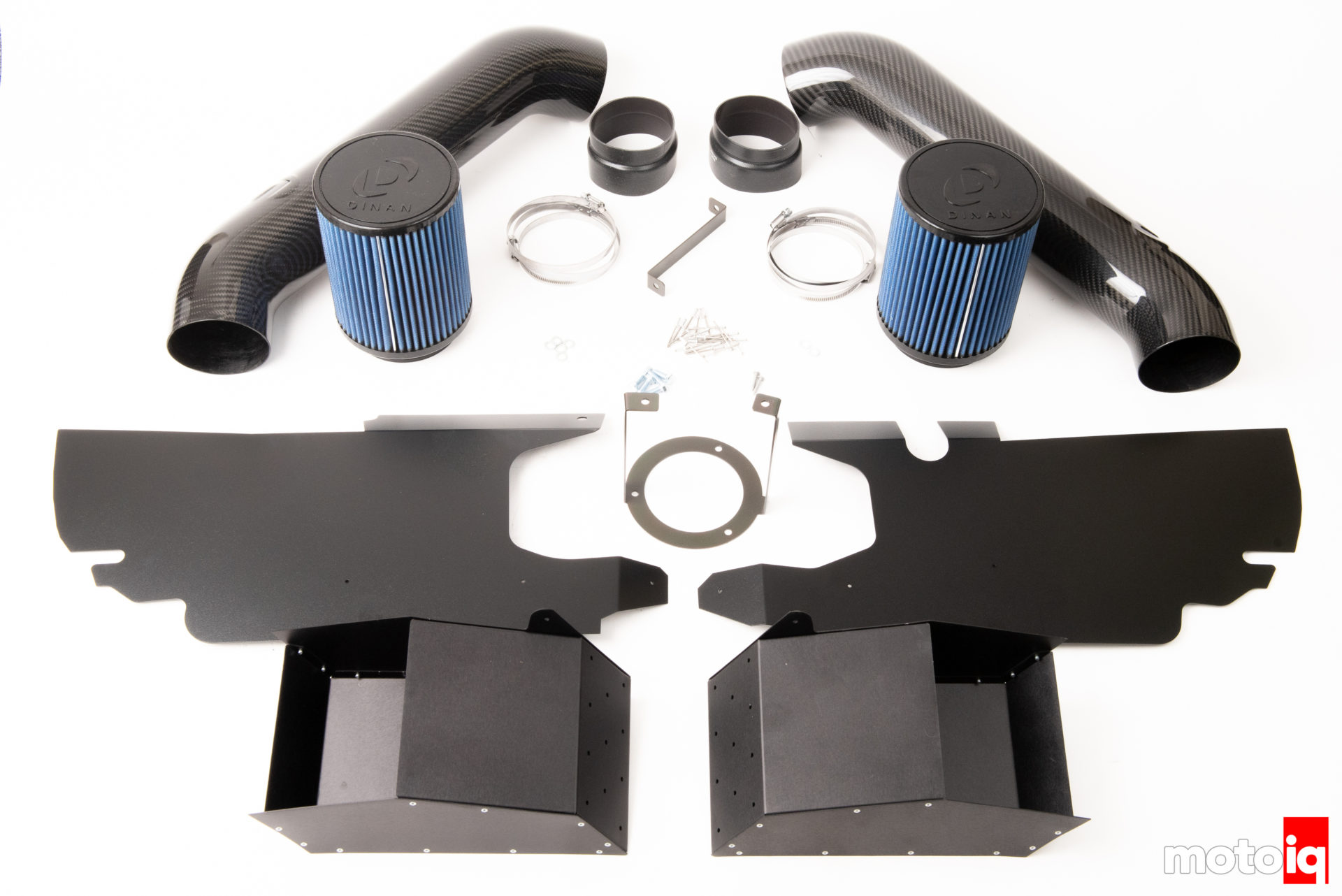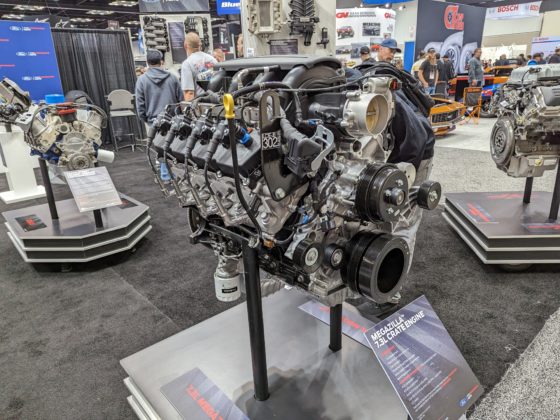
Here is the Dinan fog light surround with the newly created inlet hole for cold air. For a cleaner look the Dinan instructions suggest you cut off the mounting tabs for the stock covers that protrude a little. We don’t really like the way this looks with our without the trimming, so we will be going a different route here. There will be an update on this in the next article.

This is perhaps the most important part for improving our cars’ power production. During our first intake test we observed that the car loses power on subsequent dyno pulls quickly and had determined in our testing that this was due to the intake air temperature sensor getting abnormally hot. Dinan noted this as well and their intake comes with a kit to relocate the intake air temperature sensor to the front of the car where it can read the air temp right where it is being sucked into the engine. The wiring needs to be run and spliced into the ECU wiring and Dinan provides detailed instructions for this. Relocation the temp sensor should keep power levels more consistent due to more accurate intake temp sensing.

Our intake kit is now ready to go, we just need to put the front bumper back on. Before we did the final installation of the carbon fiber pieces we took the extra step to polish and ceramic coat them.

The pieces directly from Dinan looked good already, but after the polish and ceramic coat the depth and gloss difference was noticeable. Out of the box on the left and polished/coated on the right.

Here is the driver’s side of the intake. The carbon tubes are a nice complement to our engine compartment and the intake air has a nice straight shot to the engine.

The passenger side of the intake is ready to go as well. When the front of the car is assembled it will look great!
This is the first stage of the Dinan air intake. In this configuration, the car can be driven straight with no need for doing a tune. For stage two, Dinan offers larger Mass Airflow Meters that replace the stock parts. This requires a retune at authorized Dinan dealers. For our next article, we will be dynoing the intake as is, then adding the larger MAF’s and retuning and redynoing against our old baseline. So we will have our original power output, then the intake alone, then the intake, MAF’s and retune power outputs. We will also determine if relocating the intake air temp sensor helps with reducing heating power loss.




7 comments
Schrick cams and a lightweight flywheel, please. VAC Motorsports has both. They really transform the car.
My experience with rwd & light flywheel, it’s most nticeable in only 1st gear, when revs build up quickly .. it’s less rotary inertia at engine speed accelleration. I found I would spin the tires more easily at take off. It may improve heal-toe shifting, depends on several other things like throttle response. Good cam up grades are winners, have done a few.
Great install write up.
It looks to be very well made, but based on the Dinan site, not sure it’s worth the trouble and expense.
“More Power: + 5 HP @ 7000 RPM, + 4 LB-FT @ 7000 RPM (coupled w/ engine software).”
A BMW M5 is likely to have a good intake already.
We noted that the stock intake was a pretty good design. The biggest part of the equation could be relocating the intake air temp sensor as power drop due to the sensor getting hot is a pretty big deal on these cars.
Out of curiosity, I would measure the air temp entering the manifold , vs at the MAF sensor, after heat soak. If the same, the hot retarded timing may be justifed for engine health?
Big ticket items for low HP return. I should stop crying about Subarus.
Did we ever compare these to the stock intakes
On the dyno? I have the same set up with headers debating adding these.